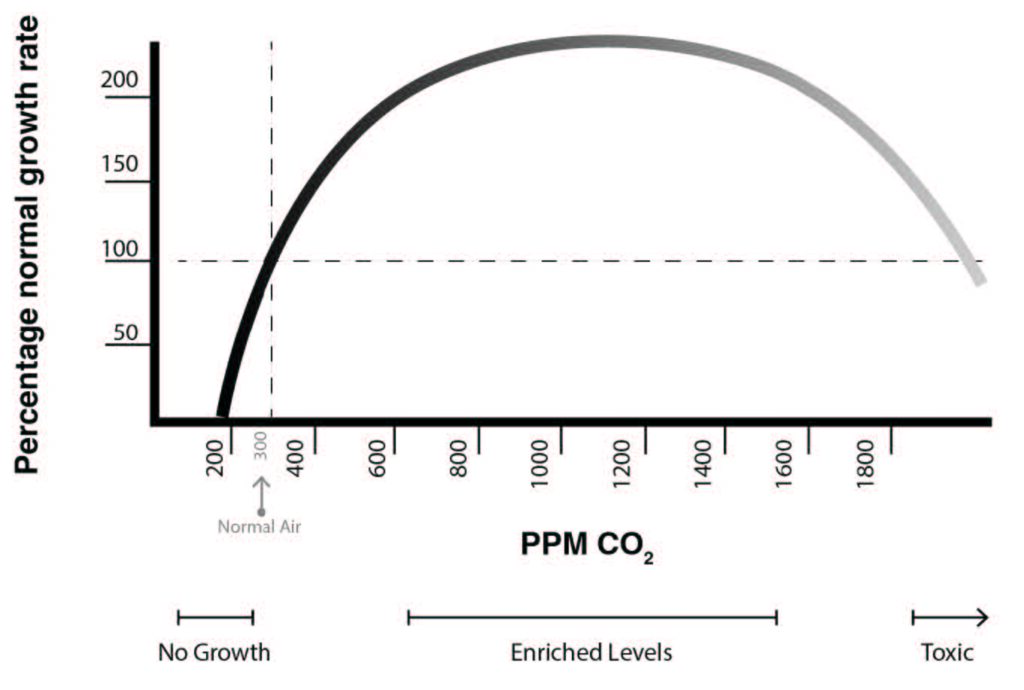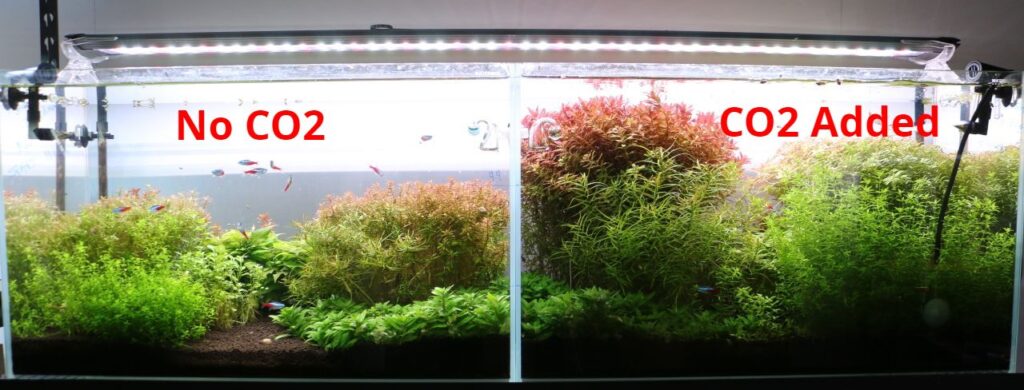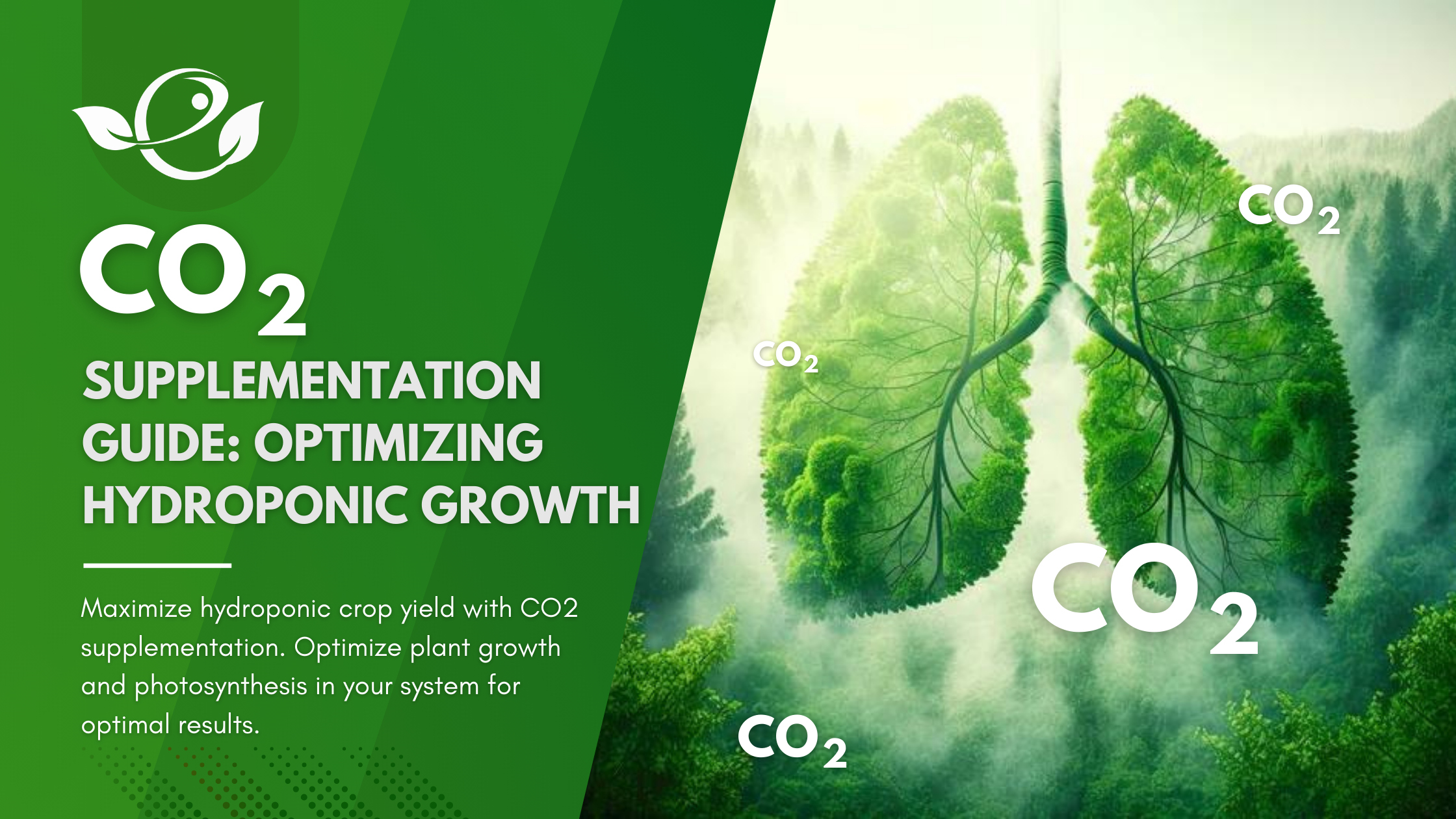Table of Contents
Hydroponic systems represent a modern approach to agriculture, enabling plants to thrive without soil by delivering nutrients directly to their roots. While this method offers numerous advantages, including water conservation and space efficiency, ensuring ideal conditions for plant growth is paramount. One often-overlooked factor in this equation is CO2, a vital component of photosynthesis.
In hydroponic setups, where plants are typically grown indoors or in controlled environments, maintaining optimal CO2 levels can be challenging yet crucial for maximizing yields and quality.
1. Understanding CO2 in Plant Growth
A. Role of CO2 in Photosynthesis
Photosynthesis, the process by which plants convert light energy into chemical energy, relies heavily on CO2. During photosynthesis, plants absorb CO2 from the air and use it, along with water and light, to produce glucose and oxygen. Without sufficient CO2, photosynthesis cannot occur at its maximum efficiency, leading to reduced growth and yield.
B. Optimal CO2 Levels for Different Plant Species
Different plant species have varying CO2 requirements due to differences in their metabolic rates and growth characteristics. Generally, higher CO2 levels result in increased photosynthetic rates and faster growth. However, optimal levels typically range between 1000 to 1500 parts per million (ppm) for most plants. It’s essential to understand the specific needs of the plants being cultivated to ensure CO2 levels are maintained within their optimal range.
C. Effects of CO2 Deficiency on Plant Growth and Yield
Insufficient CO2 levels can significantly hinder plant growth and yield. When plants are starved of CO2, photosynthesis slows down, leading to reduced carbohydrate production and overall stunted growth. Symptoms of CO2 deficiency include stunted growth, yellowing leaves, and decreased overall vigor. Addressing CO2 deficiencies promptly is essential to prevent negative impacts on plant health and productivity.
2. CO2 Supplementation Techniques
A. Natural Methods of CO2 Supplementation
- Room Ventilation: Opening vents or windows can allow fresh air, including CO2, to enter the growing area. While this method is relatively passive and inexpensive, it may not provide sufficient CO2 enrichment, especially in enclosed spaces.
- Carbon-rich Substrates: Decomposing organic matter, such as compost, can release CO2 as a byproduct. Incorporating carbon-rich substrates into the growing medium can help supplement CO2 levels over time, although the effectiveness may vary depending on factors such as substrate composition and decomposition rate.
B. Artificial Methods of CO2 Supplementation
- CO2 Generators: These devices burn natural gas or propane to produce CO2 as a byproduct. CO2 generators offer a reliable and controllable method of supplementation, allowing growers to maintain consistent CO2 levels throughout the growing cycle. However, they require proper ventilation and monitoring to prevent the accumulation of harmful gases.
- CO2 Tanks and Regulators: Pressurized tanks containing CO2 can be regulated to release controlled amounts into the growing environment. This method provides precise control over CO2 levels and is suitable for larger-scale operations. However, it requires periodic refilling and careful monitoring to avoid wastage or depletion of CO2 reserves.
C. Factors to Consider When Choosing a CO2 Supplementation Method
- Cost: Evaluate the initial investment and ongoing expenses associated with each method. While natural methods may be more cost-effective upfront, they may not provide sufficient CO2 enrichment for optimal growth compared to artificial methods.
- System Size: Consider the size of your hydroponic setup and the volume of CO2 required. Larger systems may necessitate more robust supplementation methods to maintain adequate CO2 levels throughout the growing area.
- Control and Monitoring Capabilities: Look for systems that allow precise control and monitoring of CO2 levels. Automated controllers and sensors can help maintain optimal CO2 concentrations, reducing the risk of under or over-supplementation.
3. Integration of CO2 Supplementation in Hydroponic Systems
A. Design Considerations for CO2 Supplementation
- Placement of CO2 Sources: Position CO2 generators or tanks strategically to ensure even distribution throughout the growing area. Placing CO2 sources near air intake vents or circulating fans can help facilitate uniform CO2 distribution.
- Distribution Methods Within the Growing Area: Use fans or ductwork to distribute CO2 evenly to all plants. Ensure adequate airflow and mixing to prevent CO2 stratification and maximize absorption by plant foliage.
B. Monitoring CO2 Levels
- Importance of Monitoring: Regular monitoring ensures that CO2 levels remain within the optimal range for plant growth. Invest in quality CO2 monitors or sensors to accurately measure CO2 concentrations and detect any deviations from the desired levels.
- Tools and Equipment for Measuring CO2 Levels: Utilize handheld or wall-mounted CO2 monitors equipped with digital displays or data logging capabilities. Consider integrating CO2 sensors into your hydroponic system’s control infrastructure for real-time monitoring and automation.
C. Adjusting CO2 Levels Based on Plant Growth Stage
- Vegetative Growth vs. Flowering/Fruiting Stage: Plants have different CO2 requirements during different growth stages. During the vegetative phase, when plants are actively growing foliage, higher CO2 levels (around 1000-1200 ppm) are beneficial. As plants transition to the flowering or fruiting stage, slightly lower CO2 levels (800-1000 ppm) may be sufficient.
- Strategies for Adjusting CO2 Levels Accordingly: Utilize timers or controllers to regulate CO2 supplementation based on plant growth stage and time of day. Program the system to increase CO2 levels during daylight hours when photosynthesis is most active, and reduce supplementation during the night when plants respire and CO2 uptake decreases.

4. Benefits of CO2 Supplementation in Hydroponic Systems
A. Increased Photosynthetic Efficiency
CO2 supplementation enhances photosynthetic efficiency by providing plants with an ample supply of the essential substrate needed for carbon fixation. Higher CO2 concentrations stimulate faster rates of photosynthesis, leading to increased carbohydrate production and biomass accumulation.
B. Faster Growth Rates
Plants grown in CO2-enriched environments exhibit accelerated growth rates compared to those grown under ambient CO2 levels. Rapid vegetative growth and robust foliage development contribute to shorter crop cycles and quicker turnover times, allowing growers to maximize productivity and profitability.
C. Improved Yield and Quality of Crops
Higher CO2 levels promote greater flower and fruit set, resulting in increased crop yields and improved harvest quality. Plants grown under CO2 supplementation tend to produce larger, denser fruits with enhanced flavor, aroma, and nutritional content, satisfying consumer preferences and commanding premium prices.
D. Enhanced Resistance to Environmental Stresses
Plants grown in CO2-enriched environments demonstrate greater resilience to environmental stresses, including high temperatures, drought, and pest infestations. Improved photosynthetic efficiency and carbohydrate partitioning enable plants to allocate resources more effectively, bolstering their ability to withstand adverse conditions and maintain productivity under stress.

5. Challenges and Considerations
A. Potential Risks of Excessive CO2 Levels
While CO2 supplementation offers numerous benefits, excessive CO2 concentrations can pose risks to both plants and growers. Elevated CO2 levels can lead to reduced transpiration rates, potentially causing moisture stress and nutrient imbalances in plants. Moreover, prolonged exposure to high CO2 concentrations can be harmful to human health, leading to symptoms such as dizziness, headaches, and respiratory discomfort. It’s essential to monitor CO2 levels closely and implement proper ventilation measures to prevent the buildup of excess CO2.
B. Balancing CO2 Supplementation with Other Environmental Factors
CO2 supplementation is just one piece of the puzzle in optimizing plant growth in hydroponic systems. It’s crucial to consider other environmental factors, such as temperature, humidity, and light intensity, and ensure they are balanced to provide an optimal growing environment. For example, high temperatures can exacerbate CO2 deficiencies by increasing plant respiration rates and CO2 uptake. Therefore, maintaining proper climate control is essential for maximizing the effectiveness of CO2 supplementation.
C. Maintenance and Operational Considerations
- Regular CO2 Level Checks: Schedule routine checks to ensure CO2 levels remain within the desired range. Use calibrated CO2 monitors or sensors to measure CO2 concentrations accurately and adjust supplementation as needed to maintain optimal levels.
- Refilling CO2 Tanks: Monitor CO2 tank levels regularly and refill as needed to prevent interruptions in supplementation. Keep spare CO2 tanks on hand to ensure continuous availability and minimize downtime during refilling.
- Cleaning and Upkeep of Equipment: Maintain CO2 generators and distribution systems to prevent malfunctions and ensure consistent supplementation. Regularly clean and inspect equipment components, such as burners, nozzles, and regulators, to remove debris and prevent clogs or leaks.
6. Conclusion
In conclusion, CO2 supplementation plays a crucial role in optimizing plant growth and yield in hydroponic systems. By understanding the importance of CO2, selecting appropriate supplementation methods, and implementing effective monitoring and adjustment strategies, hydroponic growers can breathe new life into their harvests and achieve exceptional results.
7. FAQ: CO2 Supplementation in Hydroponic Systems
1: Why is CO2 supplementation necessary in hydroponic systems?
CO2 supplementation is necessary in hydroponic systems to enhance photosynthesis, which is the process by which plants convert light energy into chemical energy. Increased CO2 levels stimulate faster rates of photosynthesis, leading to improved plant growth, faster crop cycles, and higher yields.
2: How do I know if my hydroponic system needs CO2 supplementation?
You can determine if your hydroponic system needs CO2 supplementation by monitoring plant growth and CO2 levels. If plants exhibit slow or stunted growth, yellowing leaves, or reduced vigour, it may indicate a CO2 deficiency. Use CO2 monitors or sensors to measure CO2 concentrations in the growing environment and adjust supplementation accordingly.
3: What are the optimal CO2 levels for hydroponic plants?
Optimal CO2 levels for hydroponic plants typically range between 1000 to 1500 parts per million (ppm). However, the specific CO2 requirements may vary depending on the plant species, growth stage, and environmental conditions. It’s essential to monitor CO2 levels and adjust supplementation to maintain optimal concentrations for each crop.
4: Are there any alternative methods to CO2 supplementation in hydroponic systems?
While CO2 supplementation is a common method to enhance plant growth in hydroponic systems, there are alternative approaches to consider. These may include optimizing other environmental factors such as light intensity, temperature, humidity, and nutrient levels. Additionally, selecting plant varieties that are more tolerant to ambient CO2 levels or employing innovative cultivation techniques may help mitigate the need for CO2 supplementation in some cases.
5: Are there any risks associated with CO2 supplementation in hydroponic systems?
While CO2 supplementation offers numerous benefits, excessive CO2 concentrations can pose risks to both plants and growers. Elevated CO2 levels can lead to reduced transpiration rates, moisture stress, and nutrient imbalances in plants. Moreover, prolonged exposure to high CO2 concentrations can be harmful to human health. It’s essential to monitor CO2 levels closely and implement proper ventilation measures to prevent the buildup of excess CO2.








